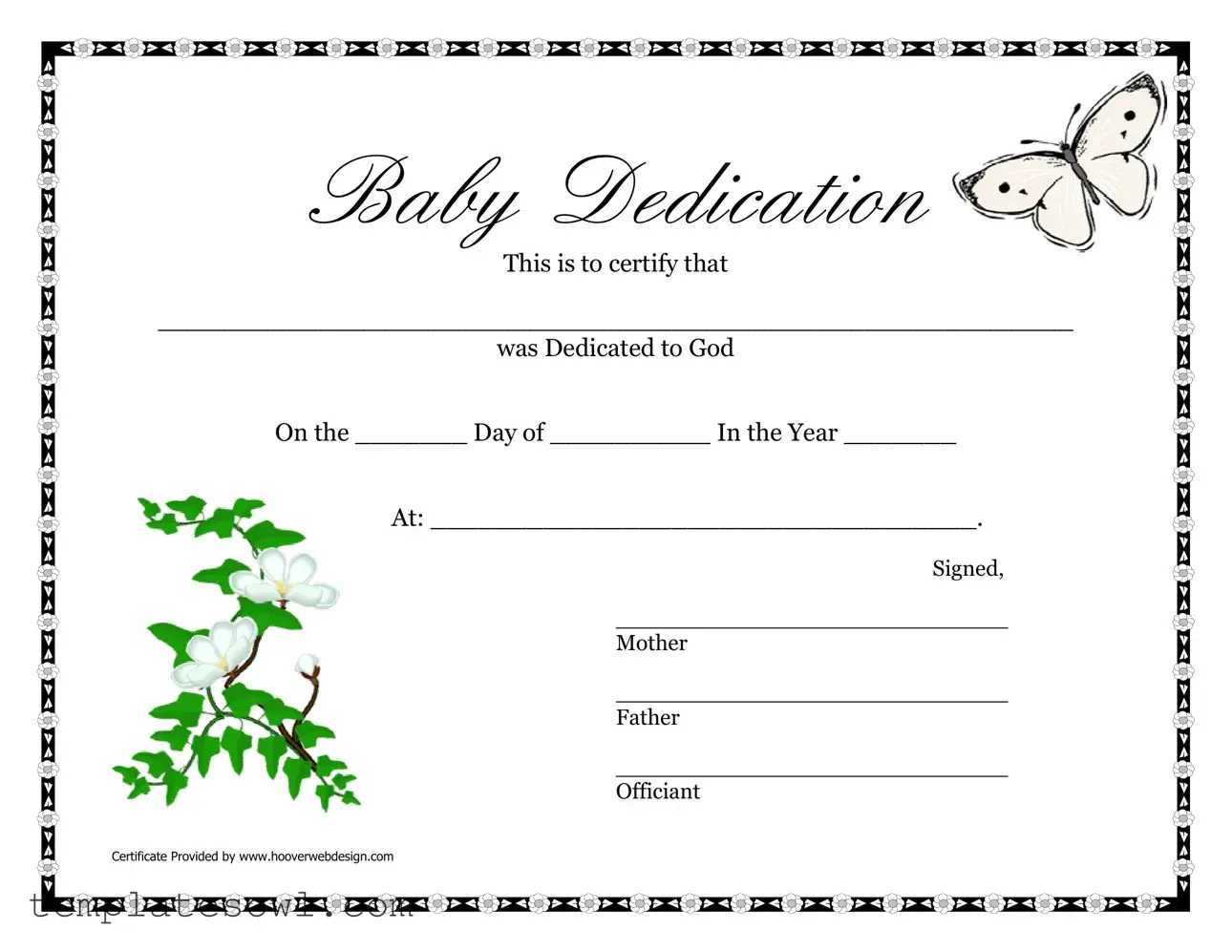What is a Child Dedication Certificate?
A Child Dedication Certificate is a formal document that records the dedication of a child to God. This practice is typically observed in religious settings, where parents publicly express their commitment to raise their child in accordance with their faith. The certificate serves as a tangible reminder of this commitment and the community's support.
What information is included on the certificate?
The certificate typically includes the child's name, the date of dedication, and the name of the officiant. Additionally, it may feature the names of both parents and the place where the dedication took place. This information solidifies the occasion in the context of the family's faith journey.
Who typically officiates a child dedication?
An officiant, often a pastor or spiritual leader, usually conducts the child dedication ceremony. This individual is responsible for guiding the ceremony and is often involved in the child’s spiritual upbringing within the community. Their role can lend significant meaning to the event.
Is a child dedication certificate legally binding?
No, a Child Dedication Certificate is not a legally binding document. It is a ceremonial acknowledgment of a commitment made by the parents. Unlike legal documents, its primary purpose is spiritual, serving as a reminder of the promises made during the dedication ceremony rather than a declaration recognized by law.
How should a Child Dedication Certificate be stored?
Parents may wish to preserve the certificate in a safe, accessible location. This could be a family scrapbook, a keepsake box, or a frame that allows for display. Proper storage ensures that this meaningful document remains intact for future reflection.
Can a Child Dedication Certificate be replaced if lost?
If the Child Dedication Certificate is lost, it may be possible to request a replacement from the officiant or the church where the dedication took place. Many religious organizations keep records of such ceremonies, making it feasible to recreate the certificate with the relevant details.
What is the significance of child dedication?
Child dedication holds deep spiritual significance for many families. It symbolizes a parent's intent to guide their child in faith and values. The act also involves the community, as it often represents a shared commitment to support the child's spiritual development throughout their upbringing.
Are there any prerequisites for child dedication?
Prerequisites for child dedication can vary by religious organization. Some churches may require a preparatory class for parents to understand the significance of the commitment. It’s advisable for parents to discuss the process with their religious leader to understand any specific requirements.
Can a child be dedicated multiple times?
A child is generally dedicated once in most traditions. However, some families may choose to hold a special reaffirmation ceremony if they feel the need to renew their commitment. Such occasions can be meaningful, but they should be approached with an understanding of the original significance of the child’s dedication.

